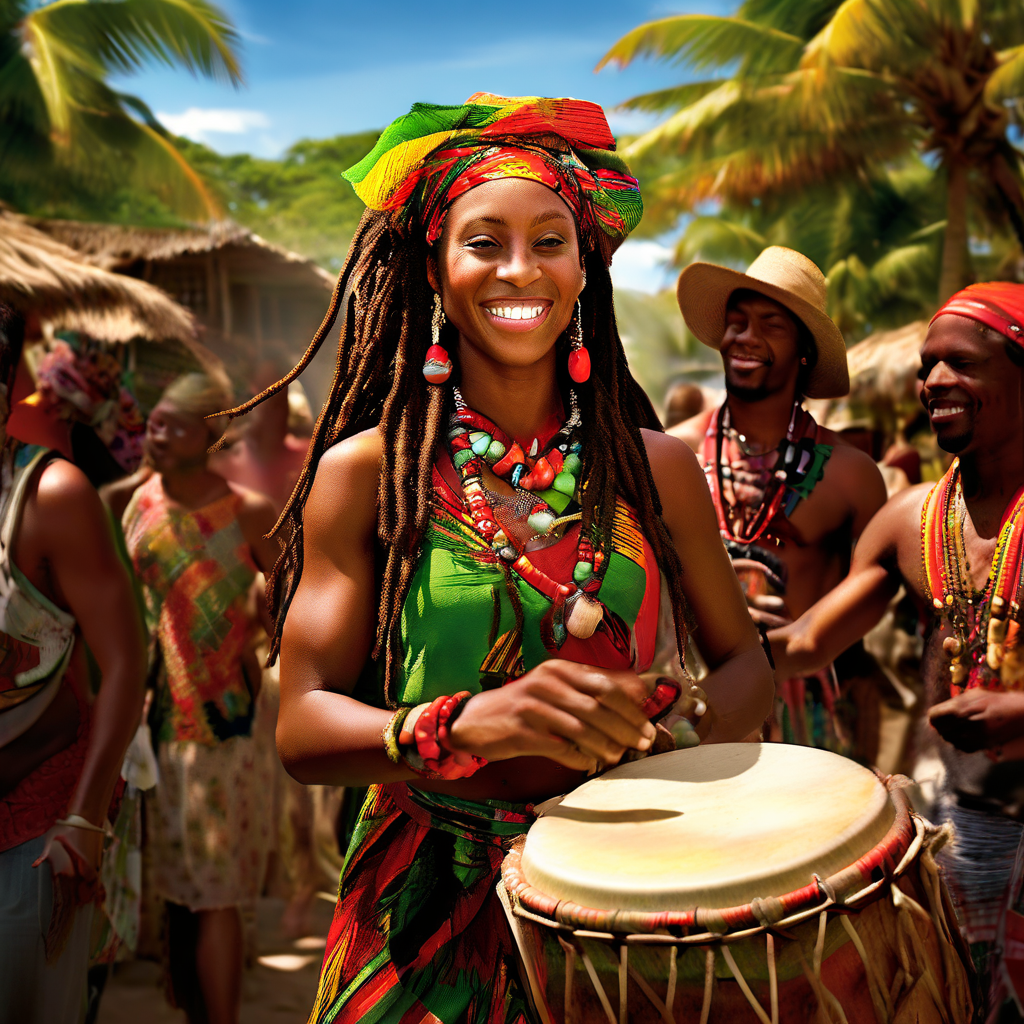Introduction:
Waagwan, mi bredren an’ sistren! When most people think of Rastafari, Jamaica often comes to mind. But di influence of Rastafari reaches far beyond Jamaica’s shores, spreading to other Caribbean islands where it has taken root and flourished in unique ways. Let’s explore how Rastafari has evolved in places like Trinidad, Barbados, Dominica, and more, and see how Rasta culture continues to thrive across the region.
Trinidad and Tobago: The Fusion of Rasta and Calypso
In Trinidad and Tobago, Rastafari has blended beautifully with local culture, especially through music. The islands are known for calypso and soca, but reggae and Rasta-inspired music have also made a strong mark. Artists like Ras Shorty I, who fused soca with Rasta philosophy, brought a new wave of conscious music to the islands. The Rasta community in Trinidad is also known for its deep spiritual gatherings, with Nyabinghi drumming and chanting echoing through the hills.
Barbados: A Hub for Conscious Living and Ital Vibes
Rastafari in Barbados is marked by a strong commitment to Ital living and environmental sustainability. The Rasta community here is active in promoting organic farming, herbal medicine, and plant-based diets. Rastas in Barbados often gather at the beach for sunrise meditation sessions, celebrating the natural beauty of the island and connecting with Jah through nature.
Dominica: The Nature Island’s Rasta Roots
Dominica, known as the “Nature Island,” has a thriving Rasta community that deeply respects the land. Here, Rastas live in harmony with nature, practicing sustainable agriculture and herbal healing. Dominica’s lush landscapes provide the perfect backdrop for Rastas who seek a life close to Jah’s creation. The island’s Rasta community also plays a significant role in local music, with roots reggae bands and cultural events that celebrate Rasta traditions.
St. Lucia: Rasta Culture and Community Activism
In St. Lucia, Rastafari has become intertwined with community activism and social justice. Rasta leaders on the island have been vocal advocates for land rights, environmental protection, and the preservation of local culture. The Rasta community hosts reasoning sessions, workshops, and events that educate the public about Rasta teachings and sustainable living practices.
Grenada: Rasta Resilience and Cultural Festivals
Grenada’s Rasta community is known for its resilience and strong sense of cultural pride. The island hosts several festivals that highlight Rasta music, art, and cuisine, bringing together locals and visitors to celebrate the movement. Grenada’s Rasta farmers are also key players in the island’s agricultural scene, promoting organic practices and sharing traditional farming knowledge.
Antigua and Barbuda: Rasta’s Role in Cultural Revival
Rastafari has played a vital role in Antigua and Barbuda’s cultural revival, particularly through festivals like Carnival and Culturama. Rastas on these islands are active in preserving local music and dance traditions, often blending them with Rasta teachings to keep the culture alive. Ital food stalls and craft markets run by Rastas are common sights at local events, adding to the vibrant tapestry of Caribbean life.
Conclusion:
Rastafari’s influence in the Caribbean goes far beyond Jamaica, with each island adding its own flavor to the movement. From Trinidad’s musical fusions to Dominica’s nature-focused lifestyle, Rasta culture continues to thrive and evolve across the region. As Rastafari spreads its message of unity, peace, and connection with nature, it remains a powerful force for change and cultural preservation throughout the Caribbean. One love, mi friend, and may the spirit of Rastafari continue to shine brightly across the islands!

